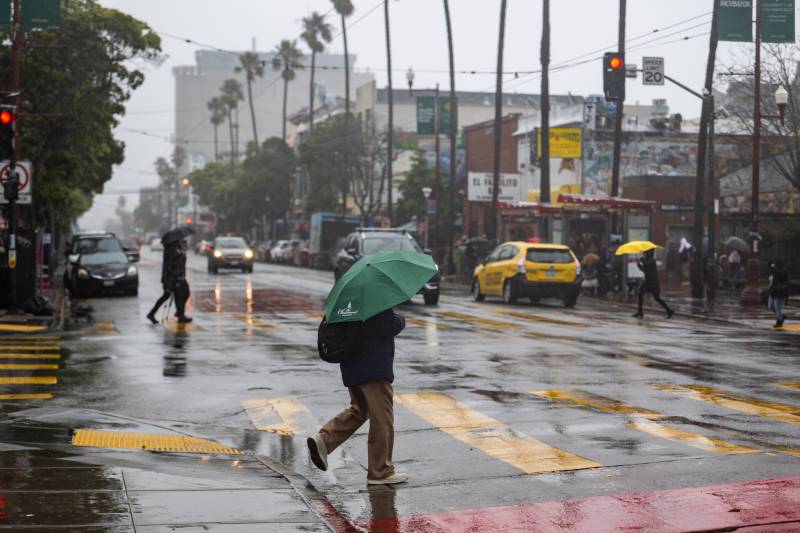Southern California could get the brunt of the storm, depending on how slow or fast the storm moves, Murdock said. The forecast indicates it could park over that region, dumping rain over that area.
In the Bay Area, the rain could last several days and drop multiple inches of rain.
“If the system continues to slow down, then it’s going to be fine-tuning on top of the fine-tuning,” Murdock said. “It’s one of those setups where we’ll have to keep an eye on it.”
A similar weather event that passed over the region last month promised strong rainfall across the area but weakened as it approached. Murdock said like the storm last month, this storm could lose steam as it barrels toward the Bay Area.
“[If there] is a very steep trough, we could actually wind up getting that low cut off, and then it just loses momentum,” he said.
Snowfall in the Sierra
Forecasters don’t expect heavy snow in the Sierra until Monday.
The weather service in Sacramento predicts periods of rain, mountain snow and gusty wind, with several feet of snow possible over higher elevations.
